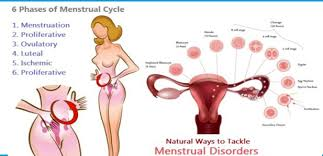Introduction
Dopamine agonists, particularly Cabergoline, have revolutionized the treatment of hyperprolactinemia, menstrual disorders, fertility issues, and pituitary prolactinomas. As a potent dopamine D2 receptor agonist, Cabergoline (brand name Dostinex) effectively suppresses prolactin secretion from the pituitary gland, restoring hormonal balance and alleviating associated symptoms.
This article explores the mechanism of action, therapeutic uses, dosage guidelines, side effects, and clinical benefits of Cabergoline in managing hyperprolactinemia and related conditions.
Understanding Hyperprolactinemia and Its Impact
What is Hyperprolactinemia?
Hyperprolactinemia is a condition characterized by excessive prolactin secretion from the pituitary gland. When elevated, prolactin, a hormone primarily responsible for lactation, can disrupt reproductive and endocrine functions.
Causes of Hyperprolactinemia
- Pituitary tumors (prolactinomas) – Benign tumors that overproduce prolactin.
- Medications – Antipsychotics, antidepressants, and antiemetics that block dopamine.
- Hypothyroidism – Low thyroid hormone levels can increase prolactin.
- Chronic kidney disease – Reduced prolactin clearance.
- Stress and nipple stimulation – Temporary increases in prolactin.
Symptoms of Hyperprolactinemia
- In Women:
- Irregular or absent menstrual cycles (amenorrhea)
- Infertility
- Galactorrhea (abnormal milk production)
- Decreased libido
- Osteoporosis (due to low estrogen)
- In Men:
- Erectile dysfunction
- Reduced sperm production
- Gynecomastia (breast enlargement)
- Low testosterone
Cabergoline: A First-Line Treatment for Hyperprolactinemia
What is Cabergoline?
Cabergoline (brand name Dostinex) is a long-acting dopamine agonist that binds to D2 receptors in the pituitary gland, inhibiting prolactin secretion. Compared to older drugs like Bromocriptine, Cabergoline has a longer half-life, better tolerability, and fewer side effects.
Mechanism of Action
- Binds to dopamine D2 receptors in the pituitary, suppressing prolactin release.
- Shrinks prolactinomas by reducing tumor size and hormone production.
- Restores gonadal function, improving fertility and menstrual regularity.
Therapeutic Uses of Cabergoline
- Treatment of Hyperprolactinemia
- Normalizes prolactin levels in 90% of patients.
- Restores ovulation and menstrual cycles in women.
- Improves testosterone levels and sexual function in men.
- Management of Prolactinomas
- Microprolactinomas (<10 mm): Often fully controlled with medication.
- Macroprolactinomas (>10 mm): Reduces tumor size and prevents complications (e.g., vision loss).
- Fertility Enhancement
- Corrects anovulatory infertility in women.
- Improves sperm count and motility in men.
- Off-Label Uses
- Parkinson’s disease (higher doses required).
- Restless legs syndrome (RLS).
- Acromegaly (adjuvant therapy).
Dosage and Administration of Cabergoline
Standard Dosage for Hyperprolactinemia
- Starting dose: 0.25 mg twice weekly (or 0.5 mg once weekly).
- Titration: Increased gradually to Cabergoline 0.5 mg twice weekly based on prolactin levels.
- Maintenance dose: Usually 0.5–2 mg per week in divided doses.
Dosage for Prolactinomas
- Initial dose: 0.25 mg twice weekly.
- Gradually increase up to 1–2 mg weekly until prolactin normalizes.
- Long-term therapy (often years) to prevent tumor regrowth.
Monitoring and Adjustments
- Prolactin levels: Check every 4–6 weeks initially, then every 6–12 months.
- MRI scans: For macroprolactinomas, monitor tumor size annually.
- Side effect management: Adjust the dose if intolerance occurs.
Side Effects and Safety Considerations
Common Side Effects
- Nausea, dizziness, and headache (usually transient).
- Fatigue or drowsiness.
- Constipation or abdominal discomfort.
Serious but Rare Side Effects
- Cardiac valve fibrosis (with very high doses, as seen in Parkinson’s treatment).
- Psychiatric effects (hallucinations, impulse control disorders).
- Postural hypotension (sudden drop in blood pressure).
Contraindications
- Uncontrolled hypertension.
- History of cardiac valve disease.
- Hypersensitivity to ergot derivatives.
Clinical Benefits of Cabergoline Over Bromocriptine
| Feature | Cabergoline (Dostinex) | Bromocriptine |
|---|---|---|
| Dosing Frequency | 1–2 times per week | 2–3 times daily |
| Side-Effect Profile | Better tolerated | More nausea, dizziness |
| Efficacy | Higher success rate | Moderate efficacy |
| Prolactin Control | Sustained suppression | Fluctuations common |
Patient Case Studies
Case 1: Female with Amenorrhea and Infertility
- History: 28-year-old woman with no periods for 6 months, galactorrhea.
- Diagnosis: Prolactin level 120 ng/mL (normal <25), MRI confirmed microprolactinoma.
- Treatment: Cabergoline 0.25 mg twice weekly.
- Outcome: Prolactin normalized in 8 weeks, menses resumed, conceived within 6 months.
Case 2: Male with Low Testosterone and Erectile Dysfunction
- History: 35-year-old man with fatigue, low libido.
- Diagnosis: Prolactin 85 ng/mL, testosterone 200 ng/dL (low).
- Treatment: Cabergoline 0.5 mg weekly.
- Outcome: Prolactin dropped to 15 mg/mL, testosterone improved to 600 ng/dL, and symptoms were resolved.
Conclusion
Cabergoline (Dostinex) stands as a highly effective, well-tolerated treatment for hyperprolactinemia, pituitary prolactinomas, and fertility issues. Its long-acting nature, minimal side effects, and high success rate make it the preferred choice over older dopamine agonists like Bromocriptine.
Patients with irregular periods, unexplained infertility, or pituitary tumors should consider prolactin testing and discuss Cabergoline therapy with their endocrinologist. This medication can restore hormonal balance, improve reproductive health, and enhance quality of life with proper monitoring.


